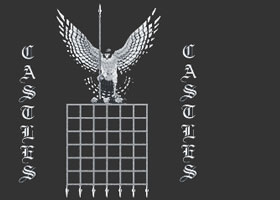The Ballista was introduced in England in 1216 during the Siege of Dover - as were many other types of siege engine. Louis the Dauphin of France crossed the Channel with a large force and laid siege to Dover Castle making a violent and incessant attack on the walls. He used the Ballista against the walls and men of Dover Castle. The constable of Dover castle was Hugh de Burgh - he refused to surrender. BallistaBallista - Description of the Ballista
- History of the Ballista
- Design of the Ballista
- Missiles launched from the Ballista
- Who invented the Ballista?
- When was the Ballista in common use?
Description and Design of the Ballista
The Ballista was a highly accurate siege engine. The Ballista was similar to a giant crossbow and worked by using tension. The two arms of a Ballista were made of wood. Ropes were attached to each arm were the springs of the Ballista. The ropes are made of twisted strands of human hair or animal sinew. When the bow-arms of the Ballista were pulled back, they twisted the ropes. The bowstring was pulled back by a winch. Although the Ballista was highly accurate its range was less than that of the Trebuchet. The missiles launched by the Ballista were much lighter than the heavy trebuchet stones and could not gain the high momentum of the heavier missiles. Missiles thrown from the Ballista
The Ballista was highly accurate and could release up to 1000 missiles in one day! Ballistas could launch missiles hundreds of yards. Attackers were ingenious in their ideas for launching missiles which would cause as much distress and discomfort inside the castle walls. Ballista missiles included the following: - Darts with iron points
- Sharp wooden poles
The Ballista and Medieval Warfare
The castle owners ensured that their Castleswere built to withstand or combat a siege. Medieval Castleswere built with access to fresh supplies from the sea. Various forms of defence including the Barbican, Portcullis, Gatehouse, Moat, Crenellations, Murder Holes etc were included in castle design. Castle attackers employed siege Warfare including starvation tactics. Castle walls could fall due to bombardment from Siege Engines such as the trebuchet, the mangonel, battering ram, and of course, the Ballista. Ballista
The story of the Ballista paints a terrifying picture. But it was just an everyday weapon employed during the Medieval era where war and violence was expected. | 
